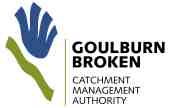Over the course of the project we have been monitoring fauna on each of the sites using bird surveys, motion-sensor camera deployments and nest box inspections, in order to obtain base-line data for future comparison. The surveys regularly turn up the expected common birds – magpies, Galahs, Crimson Rosellas, Superb Fairy-wrens, Brown Thornbills, Yellow-faced Honeyeaters, Grey Fantails, etc., and the cameras are full of shots of kangaroos and wombats – as well as foxes and deer! It could become all a bit ho-hum if it weren’t for the enjoyment of wandering the hills of the King Parrot catchment looking for birds, and also, just once in a while, the excitement of an unexpected rare species popping up!
In the case of birds, the surprises have come from a pair of Spotted Quail-thrush in ‘Hidden Valley’ (Site 4), and, most recently, a group of Southern Whiteface on the edge of one of the new sites added this year (see more details on Focus on Fauna). With mammals the Long-nosed Bandicoot (again in ‘Hidden Valley’) was unexpected, as was the frequency of occurrence of the threatened Brush-tailed Phascogale, which has so far been recorded on four of the project properties, including two of the new sites. A highlight early on in the project was of course the finding of an endangered Striped Legless Lizard on the Granters’ property (Site 5).
This slideshow requires JavaScript.
 The Strath Creek Biodiversity Project achieved much in the two years it ran, from May 2012 to July 2014. The challenge now is to consolidate those achievements and encourage others to learn from this example. To celebrate and record these achievements we’ve put together a booklet summarizing the project’s goals, methods, partners and outcomes.
The Strath Creek Biodiversity Project achieved much in the two years it ran, from May 2012 to July 2014. The challenge now is to consolidate those achievements and encourage others to learn from this example. To celebrate and record these achievements we’ve put together a booklet summarizing the project’s goals, methods, partners and outcomes.





























